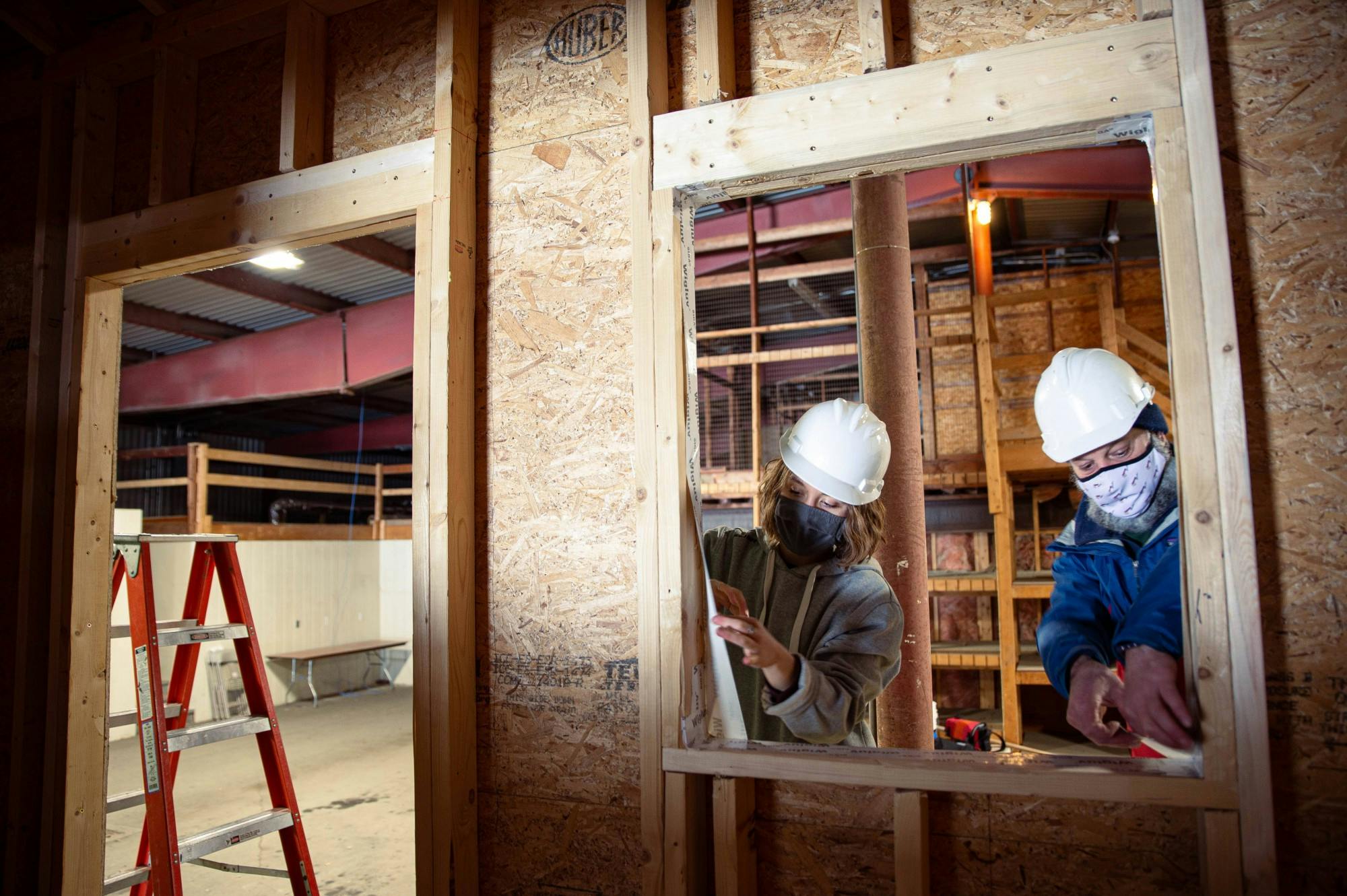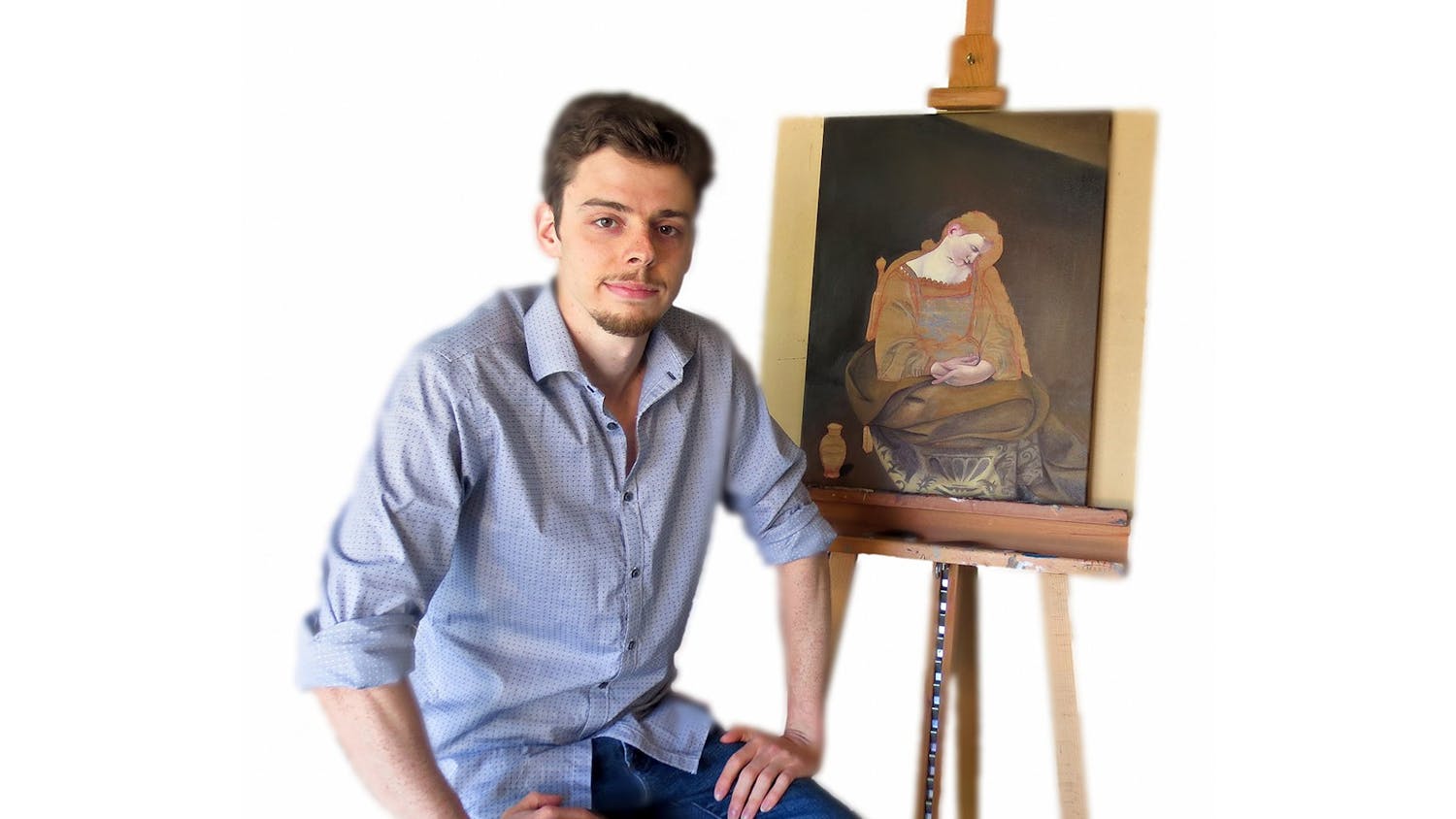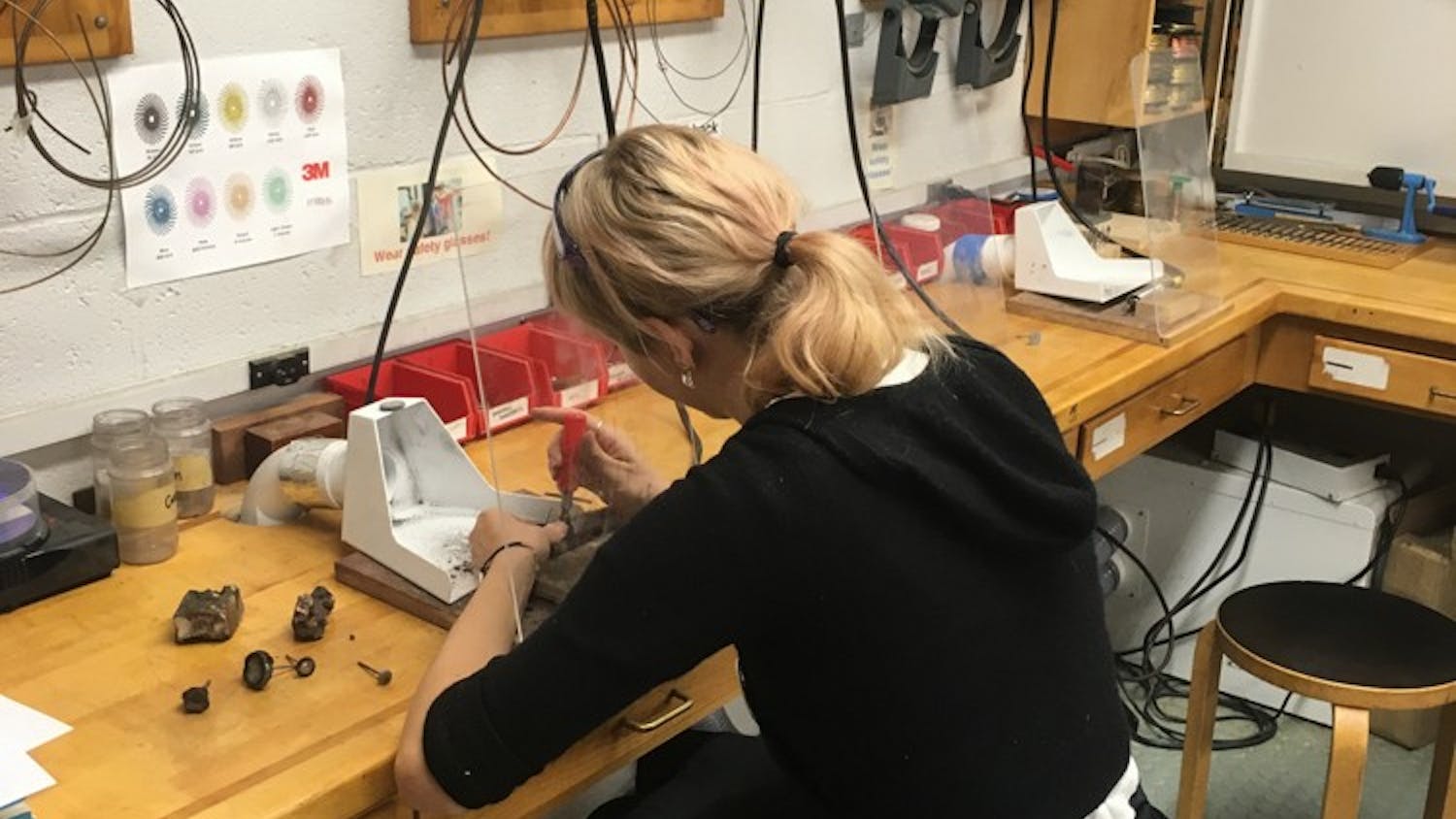This winter, a group of six engineering students are finishing up a yearslong project: an ultra-sustainable, tiny research station on wheels for ecologists working in the Second College Grant.
During the winter months, when the station isn’t being used by ecologists, it will be available as a living lab for future generations of engineering students to perform experiments and see structural engineering theories put to use. The students presented their work this February at the Hopkins Center for the Art’s Convergence Symposium, which discussed interdisciplinary solutions to social and environmental issues.
But before there was a tiny research station, there was a seed-size idea for a tiny house on Dartmouth’s Organic Farm. This idea came from Vicki May, a professor at the Thayer School of Engineering. In 2018, the Dartmouth Center for the Advancement of Learning awarded May a $45,000 experiential learning grant to build a tiny house with students.
“I’ve always believed in experiential learning,” May said. “If you’re going to be an engineer, you might as well be an engineer and do the whole process, as opposed to learning different little pieces.”
According to Stephen Doig, managing director of research at the Irving Institute for Energy and Society, this is the first tiny house project he has seen at Thayer. He believes tiny houses are an ideal design objective for engineering students interested in sustainability.
“They allow you to, at a reasonable scale, learn a lot about the interdisciplinary nature of the built environment in general,” Doig said. “I think it’s a great microcosm for the broader built environment challenge.”
Permit requirements for the Organic Farm ultimately led May to pursue a different site for the project. Working with Tim McNamara, associate director of Facilities Operations and Management, May found a new client: the ecologists at the Second College Grant.
Located in northern New Hampshire, close to the Canadian border, the Second College Grant was given to Dartmouth in 1789 by the state of New Hampshire. At 27,000 acres, it is larger than some national parks. According to biology professor Matt Ayres, a collaborator on the tiny research station, the grant is also an “actively managed forest,” with trees harvested sustainably from the site.
“It’s really quite an extraordinary ecosystem … [and] a wonderful example of how forests can be managed in ways that are very sustainable and produce environments that have great value to people coming from many, many different perspectives,” Ayres said.
In the fall, May presented the tiny house as a possible project for ENGS 89 and 90, “Engineering Design Methodology,” a two-term capstone course for engineering students. Unlike most engineering courses, the capstone series requires students to put their theoretical knowledge to practical use.
Six students in ENGS 89 and 90 were assigned to the tiny house project. Last fall, they met with ecologists from Dartmouth, the University of New Hampshire and the University of Vermont. The ecologists all had specific visions for how they would use the station and specific requests for the design, including a special screen to keep out small flies that swarm in summertime, a fridge or freezer in which to store samples and plenty of counter space. Grace Neiswander, a graduate student at Thayer working on the project, said that many of their requests “had really never occurred to [the students] before.”
By collaborating with the ecologists, the students also discovered ways to make the tiny house more sustainable.
“They were talking about using southern pine, and we were like, well, you know that you could use local [wood], which, from a carbon emissions standpoint is going to have a lower footprint,” said UVM ecology professor Tony D’Amato, adding that he appreciated the students’ sensitivity to the greenhouse gas impacts of their work.
Many of the ecologists at the grant will be using the research station as part of an emerging large-scale experiment called “Adaptive Silviculture for Climate Change,” which studies the sustainable harvest of trees and its effects on forest ecology.
D’Amato explained that the “co-production” of knowledge — collaboration with the land’s stakeholders, particularly natural resource managers and Indigenous peoples — is critical for silvicultural experiments.
According to Doig, research that brings together disparate disciplines and perspectives has become increasingly popular, especially in the natural sciences.
“Far too often, the world is full of people creating solutions and then going out and looking for a problem to apply it to,” Doig said. “It’s very topical in the [U.S.] Department of Energy and the National Science Foundation … to talk about convergence research, and that’s really the concept of working with the people who are meant to derive the benefits from the work.”
Like the ecologists, the engineering students realized that building sustainably and responsibly requires collaboration.
“I think that the biggest lesson I’ve taken is that communication is really key, and making sure everybody involved is in the loop all the time,” Neiswander said. “With the scale of our project, we have to work with a lot of different people.”
Once complete, D’Amato believes the tiny house will be an aid to his research, making it easier to work directly with the forest.
“I think one of the biggest challenges is that from a research standpoint, there’s not infrastructure there that relates to being able to process samples,” he said. “Being able to create that designated space really has been a long-term goal of Dartmouth.”
Intended as a pilot, the DCAL grant might lead to future grants to fund projects in sustainable design. May hopes that the tiny research station is just the first of many tiny house projects, which can give more students the opportunity to apply engineering concepts to real-world challenges.
“I’d love to use it as an example and possibly collaborate with Habitat for Humanity or other local groups,” May said. “Maybe there’s a tiny house challenge someday, where campuses submit entries. And I’d like it to [have] a social impact, social good.”




